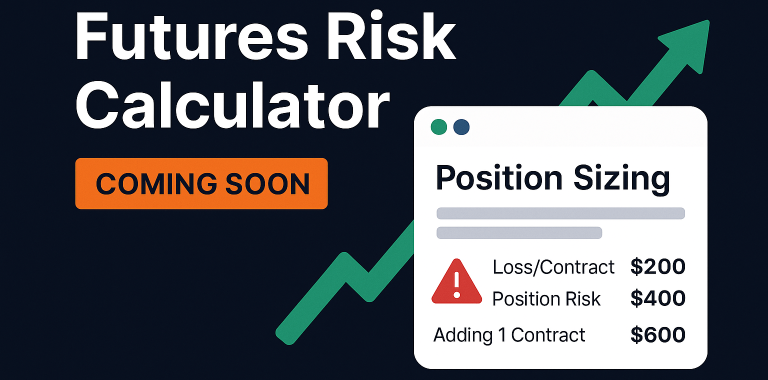Trading jargon explained in plain English.
No intimidating finance textbook definitions. Just clear explanations of what these terms actually mean when you’re trading real money.
A-D
Ask Price – The price sellers want for their shares. Always higher than the bid price. Think of it as the “for sale” price tag.
Bear Market – When prices are falling and everyone’s pessimistic. Officially a 20%+ drop from recent highs, but traders use it loosely for any downtrend.
Bid Price – The price buyers are willing to pay. Always lower than the ask price. The difference between bid and ask is called the spread.
Bull Market – When prices are rising and everyone’s optimistic. Opposite of bear market. Named because bulls attack upward, bears swipe downward.
CFD (Contract for Difference) – You don’t own the actual stock/commodity, just a contract based on its price. Popular in forex and commodity trading.
Day Trading – Buying and selling within the same day. Positions never held overnight. Requires fast execution and full-time attention.
Dividend – Cash payment some companies make to shareholders. Usually quarterly. Not all stocks pay dividends.
E-H
ECN (Electronic Communication Network) – Computer system that matches buy and sell orders. Faster and more transparent than traditional market makers.
Equity – Your account value if you closed all positions right now. Changes constantly as your trades gain or lose money.
Forex (FX) – Foreign exchange market. Trading currencies like EUR/USD. Open 24/5, highest volume market in the world.
Fundamental Analysis – Studying economic data, company earnings, news events to predict price moves. Opposite of technical analysis.
Gap – When a market opens significantly higher or lower than it closed. Common after news events or over weekends.
Going Long – Buying something expecting the price to rise. “I’m long Apple” means you own Apple stock betting it goes up.
Going Short – Selling something you don’t own, expecting the price to fall. Profit when prices drop. Risky because losses are unlimited.
I-L
IPO (Initial Public Offering) – When a private company sells shares to the public for the first time. Often volatile and overhyped.
Leverage – Using borrowed money to control larger positions. 10:1 leverage means $1,000 controls $10,000. Amplifies gains AND losses.
Limit Order – Order to buy/sell only at a specific price or better. Protects you from paying more than you want.
Liquidity – How easily you can buy or sell without affecting the price. High liquidity = easy to trade. Low liquidity = prices jump around.
Long Position – You own the asset. Make money when price goes up, lose money when it goes down.
M-P
Margin – Money borrowed from your broker to trade larger positions. Dangerous for beginners because losses can exceed your deposit.
Margin Call – When your losses are so big that your broker demands more money or will close your positions. Every trader’s nightmare.
Market Maker – Company that provides buy and sell prices. They profit from the spread. Sometimes trade against you.
Market Order – Buy or sell immediately at current market price. Fast execution but you might pay more than expected in volatile markets.
Pip – Smallest price movement in forex. Usually the 4th decimal place. EUR/USD moving from 1.1000 to 1.1001 is one pip.
Position – Any trade you have open. Long position = you bought. Short position = you sold. Close the position = exit the trade.
Position Size – How much money you put into a single trade. Critical for risk management. Use our calculator to get this right.
Q-T
Resistance – Price level where selling pressure typically stops upward moves. Like a ceiling. Prices often bounce down from resistance.
Risk Management – Rules to protect your trading capital. Position sizing, stop losses, not risking too much per trade. Most important skill.
Scalping – Very short-term trading. Hold positions for seconds to minutes. Requires fast execution and tiny profit targets.
Short Position – You’ve sold something you don’t own. Make money when price falls, lose money when it rises. Risky for beginners.
Slippage – When your order fills at a worse price than expected. Common during news events or in thin markets.
Spread – Difference between bid and ask price. Your trade starts in the red by the spread amount. Tighter spreads = lower costs.
Stop Loss – Order that automatically closes your position at a predetermined loss level. Essential for risk management.
Support – Price level where buying pressure typically stops downward moves. Like a floor. Prices often bounce up from support.
Swing Trading – Holding positions for days to weeks. Longer than day trading, shorter than investing. Good for part-time traders.
Take Profit – Order that automatically closes your position when you reach your profit target. Locks in gains without watching charts.
Technical Analysis – Using charts, patterns, and indicators to predict price moves. Based on the idea that history repeats.
U-Z
Volatility – How much prices move up and down. High volatility = big price swings. Can be good (more opportunities) or bad (more risk).
Volume – Number of shares/contracts traded. High volume usually means more reliable price moves. Low volume = suspicious moves.
Whipsaw – When price moves against you, triggers your stop loss, then immediately moves back in your favor. Frustrating but common.
Order Types Explained
Market Order – “Buy/sell right now at whatever price.” Fast but risky in volatile markets.
Limit Order – “Only buy/sell at this price or better.” Slower but protects you from overpaying.
Stop Order – “If price hits this level, place a market order.” Used for stop losses and breakout entries.
Stop Limit Order – “If price hits this level, place a limit order.” More control but might not fill if market gaps.
OCO (One Cancels Other) – Two orders where filling one automatically cancels the other. Good for take profit + stop loss combos.
Trailing Stop – Stop loss that automatically adjusts as price moves in your favor. Protects profits while letting winners run.
Risk Terms You Must Know
Risk-Reward Ratio – How much you could make vs. how much you could lose. 1:2 means risk $1 to potentially make $2.
Drawdown – Peak-to-trough decline in your account. If you had $10,000, dropped to $8,000, that’s a 20% drawdown.
Maximum Risk Per Trade – Never risk more than 1-2% of your account on a single trade. This is what keeps you alive during losing streaks.
Position Sizing – Calculating how many shares/lots to trade based on your risk tolerance and stop loss distance.
Market Session Terms
Pre-Market – Trading before official market open. Usually thin volume and wider spreads.
Market Hours – When the main exchange is open. NYSE: 9:30 AM – 4:00 PM ET.
After Hours – Trading after market close. Limited volume, can be manipulated easily.
Overnight Gap – Price difference between today’s open and yesterday’s close. Common in stocks, rare in forex.
Broker Terms
Commission – Fixed fee per trade. $0-10 typical for stocks. Some brokers are “commission-free” but make money other ways.
Spread – Difference between buy and sell price. This is how many brokers make money instead of charging commissions.
Execution – How fast your orders get filled. Good execution = orders filled quickly at requested prices.
Slippage – When you get filled at a worse price than expected. Bad sign if it happens consistently.
Don’t Get Confused By These
“The Market” – Usually means the stock market, but could refer to any financial market depending on context.
“Going Flat” – Closing all positions. No trades open. Sometimes smart during uncertain times.
“Paper Trading” – Practice trading with fake money. Useful for learning platforms but doesn’t teach you about emotions.
“Going All In” – Putting all your money into one trade. Fastest way to lose everything. Never do this.
Bottom Line
Don’t let jargon intimidate you. Most trading concepts are simple once explained properly. Focus on understanding risk management terms first – they’ll save you more money than knowing fancy indicator names.
Missing a term you’ve heard? Let us know and we’ll add clear explanations for the trading vocabulary that actually matters.
No Tilt Trading – Trading Without the Noise

